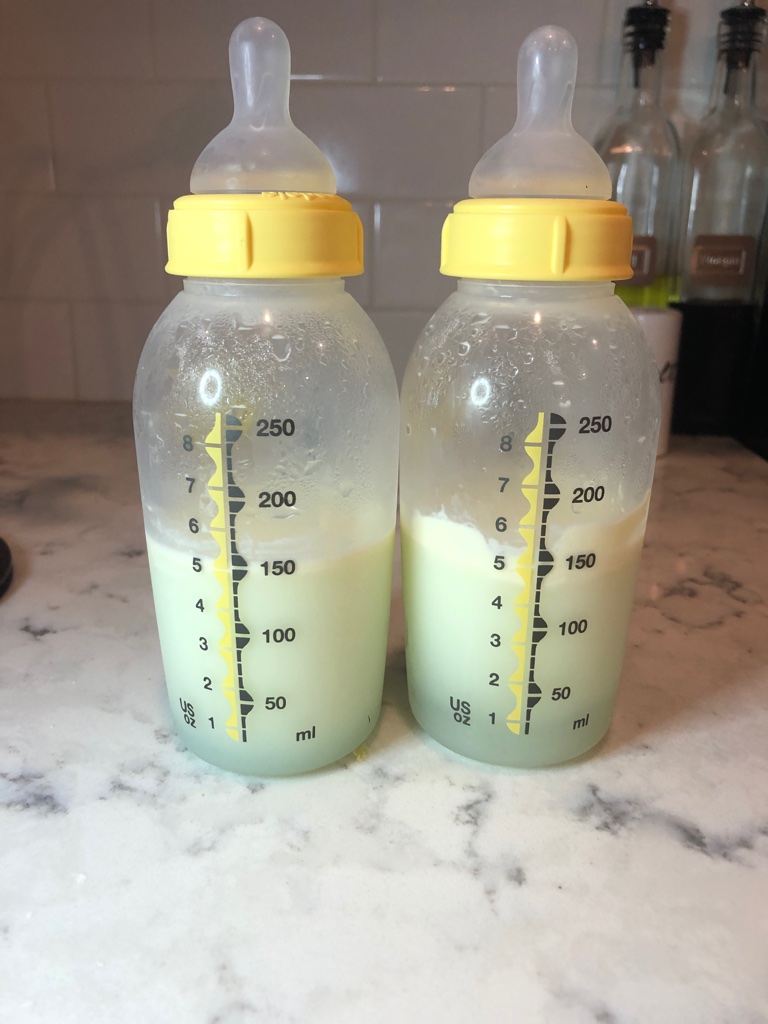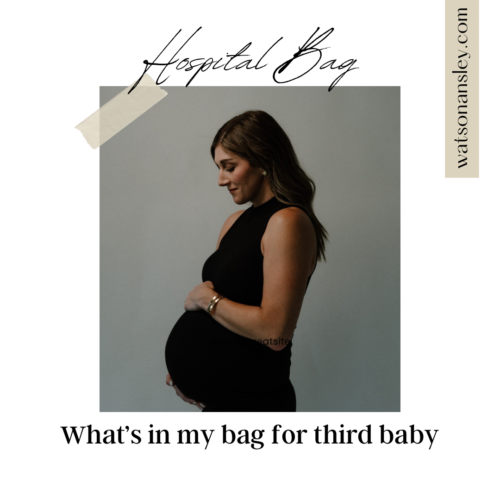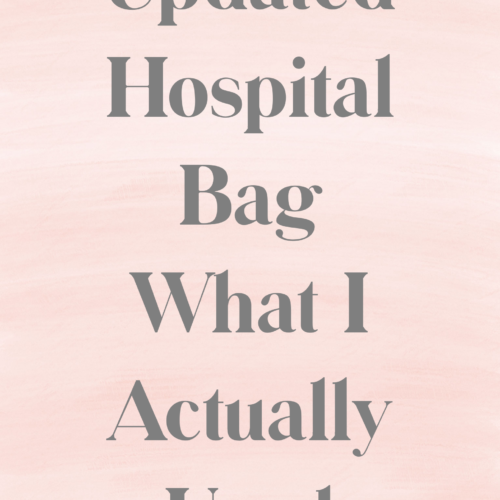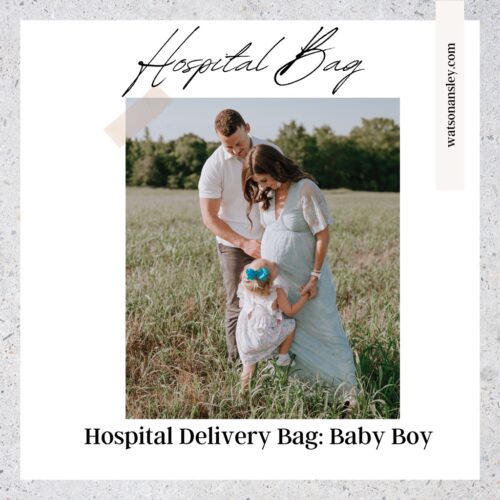The moment I started breastfeeding, I realized I had no clue what I was doing. I all the sudden had loads of questions and was googling or calling my sister nonstop, who is a mom of two. After lots of research and trying to make the process a little easier as a first-time mom, I thought about so many of my friends who were also pregnant or breastfeeding. I wondered if they also had the same questions. We are coming up on a year of breastfeeding, so I decided it may be helpful to make a little FAQ guide for you. If you are currently in this season of life, my hope is that you find quick and easy answers here, so that your feeding journey can be stress-free and so enjoyable.
Below are some of the questions I found myself constantly googling, plus a little bit of our journey.
1. When will my milk come in?
Short answer is between day 2-5 after birth. The first couple days after birth, your baby is taking in colostrum which is actually being produced in your body between week 16-22 of pregnancy. Colostrum is the early concentrated milk that is full of the essential nutrients and disease-fighting antibodies your baby needs in the first days of life. Your milk will start to come in a few days after as your baby continues to suck. When you’re in the hospital, your breasts will probably still feel pretty soft; however, a couple days later they will start to firm up, which is when your milk is coming in. For me, that was about 4 days after birth, and it was very obvious because they started leaked like crazy. Goodbye to sleeping without a bra. Hello nursing bra and nursing pads! LOL!
Click the images below to shop
2. How do I know if my baby is getting enough milk?
You can usually tell by the number of wet and dirty diapers. Typically, baby will have 1 wet diaper in the first 12-24 hours, 2 wets on day 2, 3-5 wets between days 3-5, and 6-8 wets from day 6 and on. The first days after birth, your baby’s tummy is very small and does not require much (about 1oz). However, you should be feeding between 8-12 times or every 3 hours to signal your body to produce milk. By day 7, baby is up to about 10-20oz, by 2-3 weeks she will be consuming 15-25oz, and around 1-6 months, she will be consuming anywhere from 25-35oz in 24 hours. Pay attention to signals like happiness vs fussiness after feeding, watching baby’s cheeks and jaw, and listening for swallowing. Babies are intuitive eaters and will stop when they are full; however, there will probably be a lot of cluster feeding in the early days, so feed when your baby gives you those cues. (Early hunger cues “I’m hungry”: stirring, mouth opening, turning head, rooting. Mid cues “I’m really hungry”: stetching, increasing physical movement, hand in mouth. Late cues “Calm me, then feed me”: crying, agitated body, turning red.)

3. How do I get my baby to latch when she’s first born?
First, get in a comfortable position by using a small pillow or boppy pillow. Make sure baby is close to your chest and gently touch your nipple to baby’s upper lip to encourage baby to open her mouth wider. The wider her mouth, the better the latch. You can encourage sucking by gently stroking your baby’s nose or cheeks with your fingers to wake her or nudging her chin up to get her sucking again. If you think your baby is having trouble latching properly, she could have a tongue tie, which can be clipped if necessary (consult your doctor).
4. Should nursing hurt?
It will take some getting used to at first, but a good latch should not cause you pain. You may notice dry or cracked nipples the first couple days, so keep them moist by rubbing remaining breastmilk or nipple cream (I used this MotherLove Nipple Cream, but the Lansinoh Nipple Cream is also highly recommended to put on after feedings, not before). After a few weeks, your nipple’s will be adjusted and shouldn’t require extra nipple cream.
Click the images below to shop
5. Why does my baby scream at my breast and not latch?
This can happen for a few different reasons. In my experience, around 4 months, Ansley refused to latch at the beginning of her feedings for a couple days. It seemed she was getting frustrated due to my milk not coming out fast enough. First off, do not give up! Try switching positions, going in a dark room with less distractions, check for gassiness or burping, have someone else step in to soothe and give you a quick break, or try a paci to get the sucking started and then switch back to breast. Be careful not to try a bottle too quickly if your goal is to continue breastfeeding. If the issue continues for weeks, take a look at your diet and try eliminating certain things like dairy. Babies go through phases, so don’t let it get you down too much and be sure to give yourself grace.
6. How long should each feed take while breastfeeding?
In the early days, it can be anywhere from 20-45 minutes, especially since your baby is sleepy and may need to be nudged to continue. As your baby gets older, she becomes more efficient at sucking and feeding time will decrease to about 5-15 minutes each session. Babies will stop when they are full, so go off of their cues.
7. How do I know when to switch sides? Is it normal to produce more milk on one breast?
Feed on one side until baby stops sucking, then offer the next breast. For the next session, start with the opposite side you started with last time. It is totally normal and okay to produce more milk on one side. For me, my left side has produced more for most of my journey. To try evening out, nurse (or pump) more on the side that produces less to increase its supply. Although you may be tempted to feed on the fuller side, that is just telling your body to continue making more on that side.
8. When will my supply regulate and what should I expect?
This can happen anywhere from 6-12 weeks. For me, it was probably around that 3-4 month window. You will notice your breasts feel a little softer, you shouldn’t be randomly leaking as much (I love Lansinoh sticking nursing pads), your milk is a bit more controlled coming in based on baby’s feeding schedule, and your milk will drop a little bit. Don’t be alarmed. Your supply most likely isn’t “dropping” or “going away”. It is just regulating to your baby’s needs.
9. I’m going back to work soon, when should I start pumping to build a stash?
I wasn’t going back to work, but my sister and friends have been in this situation. It’s recommended to start pumping about 2 weeks before going back to work. Pump for about 10 minutes after your morning nursing session to signal your body to produce more. Keep in mind you don’t need a huge stash, just enough for the first 1-2 days. You will be pumping while she is away from you too which will help add to the stash. I also recommend using a Haaka while nursing (see below).
10. How do I use a Haaka?
A haaka is basically a suction cup for your breast. Use this on the opposite side your nursing to catch the letdown of extra milk. I did this for every feeding the first couple of months and saved tons of milk (about 1-2 oz at each nursing session without pumping). After she’s done nursing on one side, switch the haaka to the other side as she finishes nursing. Then you can bottle or bag up the milk from the haaka to add to your stash. You can also use the haaka to relieve some pressure from engorged breasts. It has a slight suction but not as strong as a pump, so it catches the letdown without necessarily telling your body to produce even more.
11. When should I introduce a bottle? Best kind for breastfed babies?
If you plan to continue breastfeeding, it is recommended to wait to introduce a bottle until about 4-8 weeks. The risk of starting too early is having your baby have bottle preference over breast. However, starting too late, may risk your baby not wanting to take a bottle at all. We waited until Ansley was about one month and only gave her a bottle once every 1-2 weeks, since I am staying home. I wouldn’t stress too much about the timing. Do what’s best for you and your family and be sure to let dad help too to give yourself a little break. We mostly just used the bottles that came with my pumps (Spectra S2 and Medela Manual Pump & Medela 8oz medium flow bottles when she was a little older), and those have worked perfectly. Other recommendations are Como Tomo, Dr. Browns, and Tommee Tippee.
(HELPFUL TIP: If you’re in need of a pump, your doctor will write you a prescription for one and from there you can go to Aero Flow Breast Pumps to pick out your pump and see which ones are covered under your insurance. They will also send you replacement pieces after a few months!)
Click the images below to shop
12. What should I use to store my breastmilk?
I keep milk in bottles in the fridge until we use or freeze. (Note: it is not recommended to combine cold milk with freshly expressed/warm milk due to spread of bacteria). When freezing, I use the Lansinoh storage bags which are great. You can add the date, labels, and any extra notes on the outside. Don’t fill more than 5-6oz in a bag, or it could expand and cause the bag to break. After noticing a few bags leaked, I started placing the bags inside another ziplock bag before defrosting in water, so it wouldn’t leak out.
13. How long can freshly expressed milk sit out?
Freshly expressed milk can sit out at room temperature for up to 6 hours, however it’s best to store it as soon as possible. It can also sit out at room temperature for about 4 hours after being refrigerated.
14. How long can freshly expressed/pumped breast milk stay in the refrigerator?
If you plan to freeze it, it’s best to do so as soon as possible, however, it can stay in the refrigerator for up to 4 days (5 days in the back of the fridge in clean conditions) before using or freezing.
15. How long can breast milk stay in the freezer?
Up to 6 months in a freezer. 12 months in a deep freezer.
16. Is it safe to refreeze or use milk that has defrosted a little bit?
Yes. As long as there are still ice crystals in the milk, it is still considered frozen, and you can refreeze it. We had to travel a few times with breastmilk, so we just kept it in an insulated cooler with ice packs and put it in a freezer as soon as we got to our destination. If your power were to go out, keep the freezer closed, since this will help keep everything frozen until your power comes back on.
Click below to shop
17. What’s the best way to defrost frozen breastmilk?
Hold the bottle under running warm water, let it thaw in the fridge, or place inside a bowl of warm water (this is what we do). Do not leave a frozen bag of breast milk out on the counter to thaw and do not microwave or boil the milk as it can cause hot spots and burn your baby. We do, however, microwave a big bowl of water for 1-2 minutes and then stick the milk bags in that bowl. Just don’t microwave the actual milk.
18. How long is defrosted milk good?
Once fully thawed, it is good at room temperature for up to 2 hours and in the fridge up to 24hours. After heated, it should be used within 2 hours.
19. Once baby drinks from a bottle (fresh or defrosted), how quickly should it be consumed before dumping?
Within 2 hours.
20. Why is my milk separating into layers in the bottle and why does the color change?
It is totally normal for your breastmilk to separate into layers or even look a little off in color. Sometimes it can look a little thin, watery, have a light blue tint, and other times it looks thick and yellow. All are normal and safe for baby. If your milk has separated into layers and even has some thicker milk stuck on the bottle, just swirl it around (don’t shake it) or run the sides under warm water to mix it all together to ensure baby is getting all the fat nutrients stuck to the bottle. This is the foremilk and hindmilk separating.

21. What is foremilk and hindmilk?
Foremilk is the milk expressed at the beginning of your session with thinner consistency, high volume, and low fat. The Hindmilk comes at the end of your session and is thicker, creamer, and higher in fat. There isn’t much need to track this. Your baby will most likely get exactly what she needs by allowing her to finish nursing on one side before switching to the other.
22. How do you know if defrosted milk has gone bad?
Smell it. If it smells sour, then it’s gone bad. This will be a distinct smell. However, if it smells more like ‘dirty pennies’ then it is most likely totally fine to drink. This probably means you have high lipase.
23. What is high lipase?
Lipase is an enzyme that helps break down the fats in your milk to help baby digest it and when it occurs in excess, the process happens much quicker and can make your milk taste a little off. Most breastmilk should have little to no odor, but if your milk starts to smell there’s a chance you have high lipase. It is safe to drink, but some babies don’t prefer it. I have noticed my frozen milk has a smell of metal or “dirty pennies” as a friend called it, and Ansley takes it just fine. I would personally still offer it unless baby refuses it. You can also mix it with other milk or scald it to adjust the taste.
24. Is pumping and dumping necessary after drinking?
Listen, this is a pretty controversial topic. Lots of opinions, yet not tons of research on if drinking is safe while breastfeeding. I’ll give you my two sense from my research and what we’ve done. Pumping and dumping to “get rid of alcohol in your system” does not work. It will not change the content of your milk or get the alcohol out of your system. The term “pump and dump” is really meant for dumping out the breastmilk after drinking instead of storing it for a feeding. In which case, you would use stored milk that was not pumped after drinking. Some research shows that you should wait 1-2hours after each drink before breastfeeding and others says if you’re safe to drive then you’re safe to breastfeed. I have continued to drink in moderation a few times a week, and usually don’t dump unless I feel I have had too much. This is totally a personal choice, and I recommend doing whatever makes you most comfortable.
25. How can I increase my breastmilk supply?
Staying hydrated, eating healthy, breastfeeding often and power pumping. Power pumping is when you pump right after nursing for 20 minutes on, 10 minutes off, another 10 minutes on, 10 minutes off and one last 10 minute pump, equaling a total of 40 minutes with two 10 minute rests. However, I did it a little different when we were preparing to leave Ansley for a week (sadly our trip was cancelled, so now I have loads of frozen breastmilk!). I pumped for about 15-20 minutes after each nursing session for about 7 days straight, then dropped down to only pumping in the mornings and nights after she nursed. This can actually cause you to over produce, so I recommend only doing this if your baby truly isn’t getting what she needs or if you are planning to leave and need to build more of a stash.
26. What to do when you have a clogged duct or mastitis?
If you have either of these or both, you will probably have tender breast with a knot in a certain spot, or maybe even flu like symptoms or fever. Although it won’t feel great, continue to nurse (or pump) on the clogged, tender side, so that you are draining the milk and essentially unclogging the build-up in your breast. It also helps to use a warm cloth and massage it out, take acetaminophen, and drink plenty of fluids. If it’s just a clogged duct, you can usually catch it before it gets too painful, and it should go away pretty quickly. If you think it’s getting worse, it could be mastitis, which can be treated by a doctor with antibiotics.
27. Will my supply fluctuate?
It is totally normal for your milk supply to fluctuate from month to month and even during each feeding. Mine definitely has fluctuated. Your diet and hydration can have a big impact on your supply, but don’t stress too much if your supply seems to go down. Continue nursing, and your baby should continue to receive the amount that she needs.
28. Should I wake up to pump if my baby starts sleeping through the night?
No. Unless your doctor says otherwise, I would not wake up to pump, unless you are extremely uncomfortable. Your supply will adjust according to your baby’s needs.
29. Can I get pregnant while breastfeeding and is it safe?
Yes and yes. Breastfeeding is not birth control, and you can get pregnant. It is safe (obviously talk to your doctor) but may get to a point where you are uncomfortable continuing to nurse while pregnant.
30. If I’m breastfeeding, when will I get my cycle back?
This looks different for everyone. If you’re not breastfeeding, it could be as early as 6 weeks to 3 months. Most breastfeeding moms usually get their cycle back anywhere between 9-18 months. It is totally safe to continue breastfeeding while on your period, however, you may notice a slight change in your breastmilk or your supply as your cycle is approaching. It’s best to keep breastfeeding like normal if you’re comfortable.
31. If I’m away from my baby and she takes a bottle, should I pump?
Yes. I am pretty OCD when it comes to…well…a lot of things, but staying on top of pumping when my baby is taking a bottle is pretty important to me. I truly think this has helped me keep my supply up the entire time. I try my best to pump out the amount she is taking in a bottle, so that my supply matches her needs. This may not be physically possible for some, but the goal is to keep signaling your body to produce milk if your baby is taking a bottle. On the flip side, don’t stress too much if you’re away from your baby and don’t know the exact times or amount she is taking. Just try your best to pump on your normal schedule, and you and your baby should bounce right back to normal when you’re reunited.
I could definitely cover even more questions on this topic, but I know this is a load of information. I hope this was helpful for you, and that you can use this as a guide when you’re in a pinch and need some quick information.
Did you find this to be helpful? I am happy to answer any other questions you may have on this topic. Feel free to leave a question or comment below, or you can reach out to me directly.
I am cheering you on, mama! You got this!
xoxo,
Watson
PS: Here are a few other great resources for breastfeeding, more specifically if you need clarity on drug/medication safety while nursing.
Infant Risk
LactMed
PSS: if you are pregnant, you will most likely have a lactation consultant with you in the hospital after delivery to guide you in your journey for the first couple days. You can also find many breastfeeding courses online either through your hospital or google.
















